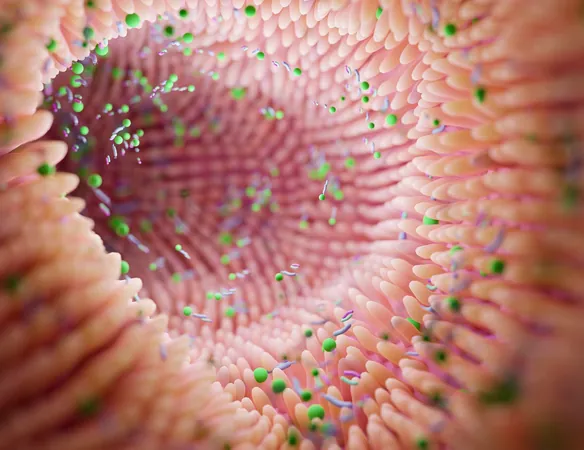
Revealing the Secrets of Gut Bacteria: How They 'Sniff' Out Nutrients and Shape Our Health
2025-08-31
Author: William
Unlocking Microbial Mysteries
A groundbreaking study reveals that our gut bacteria are far more sophisticated than we ever imagined. Scientists have mapped out the chemical signals these microbes detect, shedding light on how they locate nutrients to thrive. This research, led by Victor Sourjik at the Max Planck Institute for Terrestrial Microbiology, focused on actual gut residents rather than the usual lab pathogens, challenging existing assumptions about microbial behavior.
Microbes in a Nutritional Marketplace
The gut microbiome is a bustling ecosystem where microbes swap byproducts and resources, engaging in a complex game of cross-feeding. Using a mechanism called chemotaxis, bacteria can swim towards helpful nutrients and away from harmful substances. Landmark studies have shown that the bacteria Escherichia coli are pulled in by amino acids, tying their growth directly to the availability of these nutrients.
The Quest for Nutrients
This new research directly asks: What exactly do beneficial gut bacteria sense in the rich chemical landscape of our intestines? By constructing a sensory library from twenty different gut species, particularly focusing on the abundant Clostridia group, researchers examined over 150 metabolites to uncover 34 specific matches between bacterial receptors and nutrients.
What Do Bacteria Prefer?
The findings indicate that carboxylic acids, especially lactic and formic acids, are top picks for these microbes. This discovery aligns with our understanding of microbial metabolism, where one organism’s waste can effectively serve as another’s meal. Growth experiments with various Roseburia strains confirmed that these chemical cues directly correspond to nutrient sources, driving rapid bacterial growth.
The Science of Sensing
Researchers distinguished between two sensor designs. One type responded to single molecules like lactate, while another could detect a diverse array of chemicals, showcasing the versatility of bacterial receptors. A particularly notable sensor, dCache_1UR, could uniquely identify both uracil and acetate, indicating a remarkable adaptation mechanism allowing bacteria to thrive amidst fluctuating gut conditions.
Communication within the Gut Community
When one microbial species secretes nutrients like lactate or formate, those with corresponding sensors can effectively track these signals, creating a network of cross-feeding relationships that foster community resilience. Such interactions extend beyond mere nutrition; compounds like indole can influence inflammation and modify microbial interactions.
Implications for Health and Nutrition
As certain bacteria pursue lactate and formate, our diet could inadvertently guide their growth patterns. This insight opens doors for innovative interventions that modify metabolite landscapes in the gut, rather than solely introducing new bacterial strains. By stabilizing lactate production, we might enhance beneficial short-chain fatty acid (SCFA) levels, leading to better gut health.
Future Directions in Gut Research
The revelation of dual-module receptors not only raises fascinating questions about their cooperation but also emphasizes the adaptability of gut bacteria. Observations indicate that receptors tend to bind more strongly to rarer metabolites, a clever advantage in resource-scarce environments. Understanding how diet, medication, or disease impacts these preferences could be crucial for future health strategies.
This pivotal study, published in the *Proceedings of the National Academy of Sciences*, highlights the intricate relationship between gut chemistry and human health. As researchers continue to explore the nuances of microbial communication, the possibilities for enhancing our well-being through gut health appear boundless.









 Brasil (PT)
Brasil (PT)
 Canada (EN)
Canada (EN)
 Chile (ES)
Chile (ES)
 Česko (CS)
Česko (CS)
 대한민국 (KO)
대한민국 (KO)
 España (ES)
España (ES)
 France (FR)
France (FR)
 Hong Kong (EN)
Hong Kong (EN)
 Italia (IT)
Italia (IT)
 日本 (JA)
日本 (JA)
 Magyarország (HU)
Magyarország (HU)
 Norge (NO)
Norge (NO)
 Polska (PL)
Polska (PL)
 Schweiz (DE)
Schweiz (DE)
 Singapore (EN)
Singapore (EN)
 Sverige (SV)
Sverige (SV)
 Suomi (FI)
Suomi (FI)
 Türkiye (TR)
Türkiye (TR)
 الإمارات العربية المتحدة (AR)
الإمارات العربية المتحدة (AR)